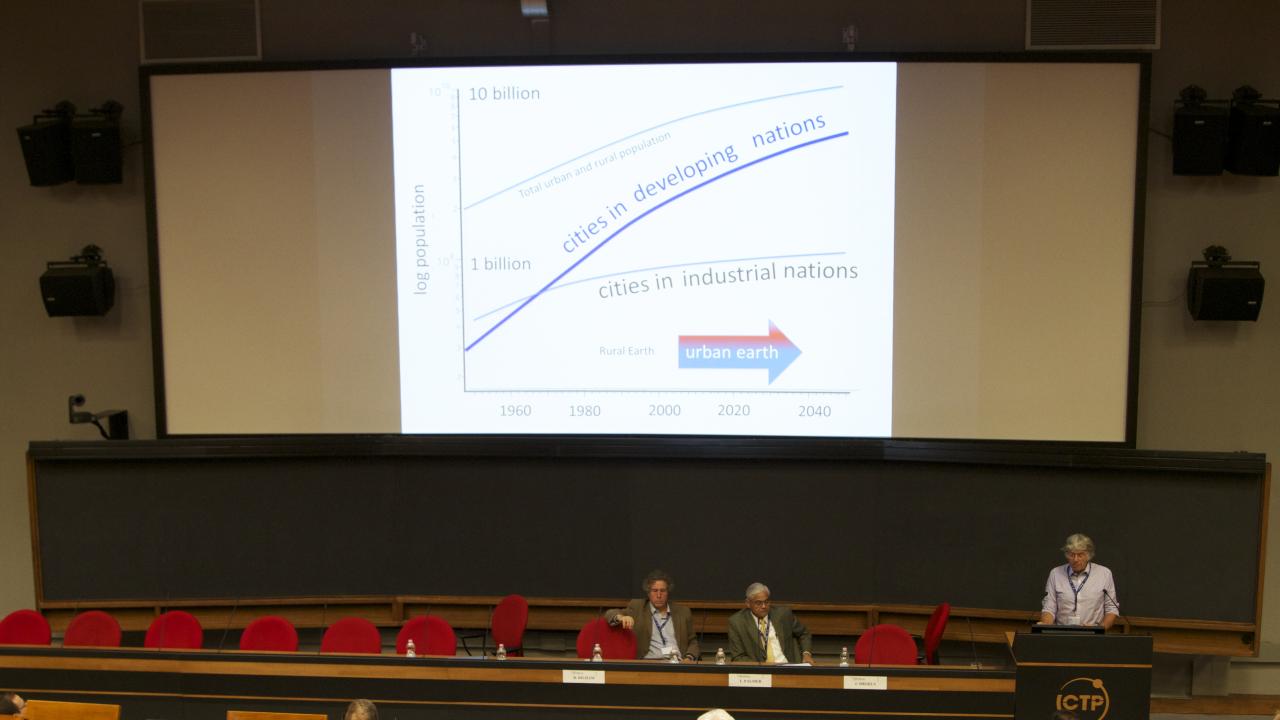
The third day of 50th anniversary activities at ICTP began with two speakers addressing ways in which we could improve our understanding of the Earth and use science to improve human safety. The session was chaired by Jagadish Shukla of the Center for Ocean-Land-Atmosphere Studies, who as a result of a lunch with Abdus Salam in 1988 became one of the early leaders of ICTP's climate research section.
Tim Palmer of the University of Oxford called for the formation of an international centre for climate science. "It's time for climate science to get into the same league as Hubble and the Large Hadron Collider," Palmer said. He praised the ability of models to enable societies to prepare for natural disasters and evacuate people in time, but pointed out that current climate models are not as detailed as they could be. Making them more detailed would require greater computational power than one centre could fund and manage, but could be done with an international collaboration, he argued. He also suggested that climate models should explore the possibility of using "inexact computing," which replaces detailed calculations with coarser-grained ones that sacrifice little in the way of accuracy. This method would result in "greater accuracy with less precision," as Palmer put it, finally allowing models to make predictions on a smaller scale while saving computational and data storage energy in the process.
Palmer was followed by Roger Bilham of the Cooperative Institute for Research in Environmental Sciences at the University of Colorado, Boulder, who also began by assessing the limits of prediction in his field of seismology. Although he touched on the practical drawbacks of the current science - an inability to predict earthquakes or building collapses more than a few seconds in advance - he focused on the social causes of the high death toll from earthquakes. Rather than relying on better predictive science, which Bilham implied is probably not forthcoming, he pointed out that the countries with the highest number of earthquake casualties are those that are more corrupt than expected at their income level. Additionally, the most earthquake-prone countries are also some of the poorest. Rather than end on a gloomy note, however, Bilham suggested that this could be corrected with improved education. In an appropriate final note for the session, Bilham concluded: "ICTP to the rescue!"
















